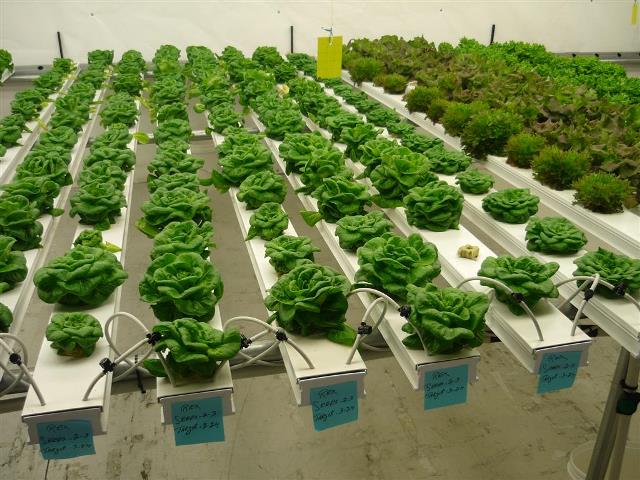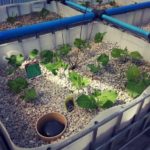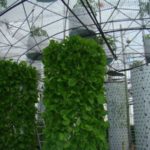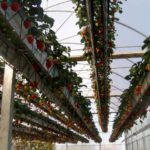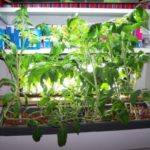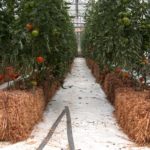Hydroponics is an alternative to the popular classical method of growing various plants in the ground. It is appropriate in the event that it is not possible to plant vegetables, herbs, flowers, berries directly into the soil. The technology is expensive, but it justifies itself if it is grown in greenhouse conditions in areas with an unfavorable climate for crops.
Table of contents
What is hydroponics?
Hydroponics is a way to grow crops in nutrient solutions without using soil. With this technique, vegetables and flowers feed, as usual, at the expense of their roots. But all the nutrients necessary for growth are taken from specially prepared water, which must contain elements of potassium, iron, calcium, sulfur and others. True, the cultures themselves must be placed in the substrate, which must be irrigated from time to time with moisture. And all for the reason that in addition to water and beneficial trace elements, the roots of vegetables and flowers need oxygen.
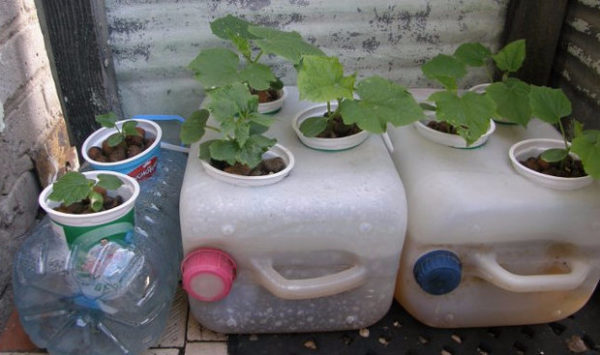
Depending on the substrate, there are such hydroponic methods:
- Aggregoponika - is a way of cultivation of cultures on solid inorganic materials. Plant roots are placed in gravel, gravel, perlite, expanded clay, sand. Water the seedlings with nutrient solution. After a few years, artificial soil substitutes are polluted, salted and need to be washed.
- Hemoponica - is a type of crop based on a substrate of organic materials. In this case, the soil is sawdust, tree bark, coconut fiber, moss, high peat. As a substrate, this raw material is used for 2 years. Pre-organic materials are ground,the acid reaction of the medium is also corrected. Food is carried out by irrigation with water enriched with micronutrients.
- Ionitonik - a method of growing crops on artificial soil, containing all the useful substances necessary for growth. Seedlings in this case, you need to water only with plain water. The substrate consists of a mixture of two types of synthetic resins: “Anion exchanger EDE-10P” and “Cation exchanger KU-2”. There is another type of substance used as a habitat for plants. This is a synthetic ion exchange resin called Levatite HD 50.
- Aeroponica - With this method, the roots of crops hang in the air in a special chamber. Using a pump, the nutrient solution is sprayed. Thus, water droplets fall to the roots.
- Hydroculture - the method of cultivation of vegetables and greens, in which their roots are placed in a solid artificial soil, and water with useful elements is always at the very bottom of the box or pot.
- Aggregoponika
- Vertical aeroponics
- Horizontal aeroponics
- Variant of hydroculture at home
- Hemoponica
What grows in hydroponics
All year round in the country in the greenhouse or at home you can grow vegetables and herbs using hydroponics.
Plants that are grown using hydroponics:
- Vegetable crops: tomatoes, cucumbers, radish, broccoli, eggplant, cabbage, pepper, leek.
- Bananas.
- Houseplants: asparagus, ivy, ficus, dracaena, cacti, azalea, camellia.
- Strawberry, strawberry, honeysuckle.
- Salad, dill, rosemary, basil, parsley, melissa, mint, sage.
- Flowers: tulips, daffodils, gerberas.
- Raspberry, melon, watermelon.
It is not recommended to cultivate such crops with the hydroponic method: potatoes, beets, carrots, mushrooms, hydrangea.
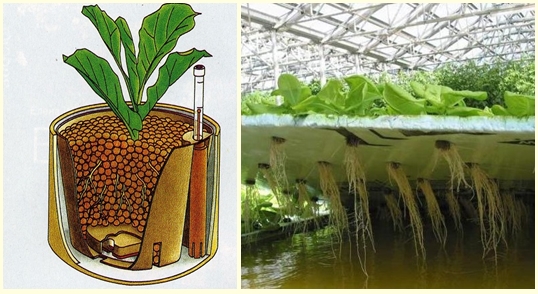
Pros and cons of growing crops in hydroponics
Benefits:
- Vegetable crops are provided with all the beneficial substances and vitamins. Vegetables and greens grow healthy and strong. Productivity increases several times.
- There are no pests in the artificial substrate, and cultures do not get sick with anything. There is no need to use chemicals to control beetles and caterpillars.
- No need to deal with weeds, loosen the soil.
- Plant roots receive oxygen and moisture in the required amount.
- Plants do not accumulate elements harmful to human health.
- It is not necessary to water cultures every day.
- Vegetables and flowers are easier to care for, no unpleasant smells, midges, dirt.
Disadvantages of hydroponics:
- In order to grow crops in this way, money is needed for equipment, materials, fertilizers, seeds.
- At the initial stage, hydroponics is a time consuming process.
How to prepare substrate and nutrient solution at home
In order to grow plants in your farm using the hydroponics method, you first need to purchase special containers - hydropots. These are pots inserted into each other. The inner pot should have holes for the roots. It is filled with a solid substrate. And the outer box is 1/3 filled with nutrient. You can independently make containers for plants from a plastic bottle. It is cut in half and inserted into each other. In the one that narrows, they make holes for the roots.
First, the materials are cleaned from impurities, sieved through a sieve. The size of the fractions should not exceed 2 cm. Then the substrate is sterilized with a saturated solution of potassium permanganate. The material washed with pure water is used for planting sprouted and rooted seedlings. Initially, seeds are planted in sand or a container of mineral wool and watered.
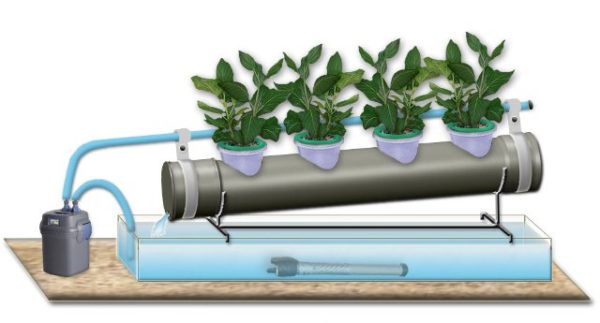
Feed compounds buy ready to use. It is best to buy fertilizers "Uniflor But", "Flora Series", "Uniflor Growth". It is necessary to adhere to the recommendations when using these substances, that is, to dissolve the fertilizer in water in certain quantities.
So, to prepare a solution for 1 liter of water take 15 ml of fertilizer. In order to measure the rate used ordinary 20 ml syringe. Water for irrigation should be used only defended. Once a month, it is desirable to change the complex of fertilizers.
To feed the plants, a 25% solution of calcium nitrate is also used; for this, 250 g of fertilizer is diluted in 1 liter of water. And for the preparation of a solution for watering, in addition to purchased ready-made fertilizers, 2 ml of dissolved nitrate are taken for 1 l of water.
Stored solution for watering plants in a dark and cool place, its temperature should be equal to 20 ° C.
It should be remembered that for each period of plant life (germination, flowering, fruiting) requires a certain concentration of mineral salts in the solution, which is watered culture. Exceeding the rate of fertilizer leads to drying and falling leaves. It is better not to feed the plants than to overfeed.
